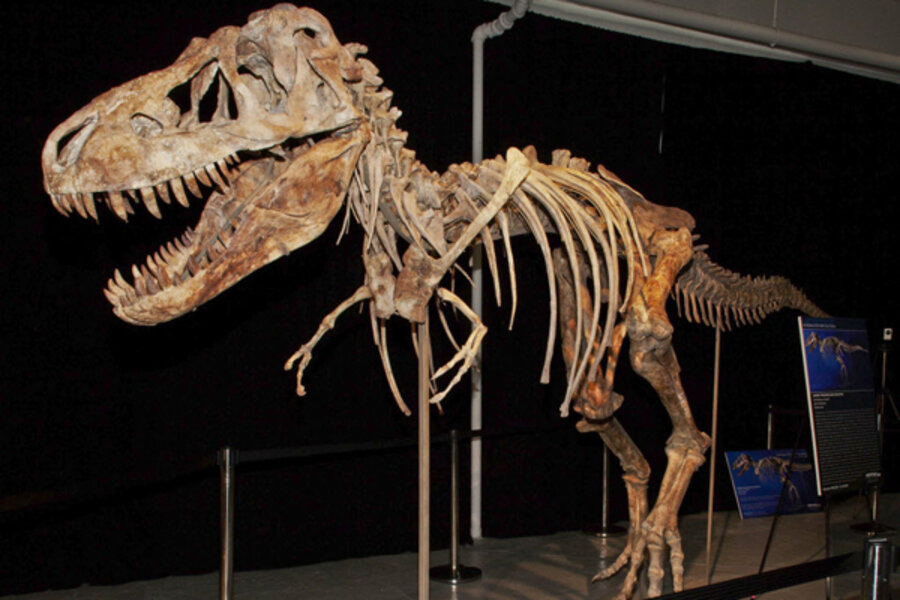Fossils are a 'Frankensaur' says paleontologist
Loading...
| New York
A 70-million-year-old dinosaur at the center of an international fossil custody battle is a Frankenstein-like amalgam of parts of several creatures, a Manhattan federal court was told on Wednesday.
The claim - which federal prosecutors challenged - could complicate the US government's forfeiture case against a Florida fossil dealer who reconstructed tyrannosaurus bataar bones and sold the piece at auction in May for $1.05 million. Auction marketing material for the skeleton implies that it is a reconstruction of a single creature.
In June, US officials seized the eight-foot-tall (2.4-metre tall), 24-foot-long (7.3-metre long), partially-reconstructed cousin of the Tyrannosaurus rex, after Mongolia demanded its return on suspicion that it was smuggled out of the Gobi desert.
On Wednesday, Michael McCullough, an attorney representing Florida commercial paleontologist Eric Prokopi said that about half the reconstruction - fossilized bones welded onto a metal frame - came from one creature and the other half from "at least two, most likely many" creatures.
"It's kind of a Frankenstein model of a dinosaur parts of several dinosaurs," a somewhat surprised U.S. District Judge P. Kevin Castel noted.
Government paleontological experts apparently believe that the reconstruction came from a single creature.
"They did not pick up that this was from several sources?" Judge Castel asked Assistant U.S. Attorney Martin Bell.
"Their opinion is that it is largely from one dinosaur," Bell replied. "It was marketed as one dinosaur. A 75-percent complete, but one dinosaur."
Mongolia's claim also appears to have assumed that the fossils all came from a single creature in a single region.
U.S. officials seized the skeleton in June after the President of Mongolia, Elbegdorj Tsakhia, demanded that the dinosaur be returned to his country.
The U.S. government case, filed on behalf of Mongolia, rests in part on the claim that Prokopi wasn't forthright on U.S. customs forms in which he valued the imported dinosaur fossils at $19,000, and then turned around and sold the reconstruction for more than $1 million.
But on Wednesday McCullough said that the $19,000 shipment only constituted part of the reconstruction, and that Prokopi had collected other parts of the skeleton from multiple sources in at least three separate shipments imported to the U.S. between 2007 and 2009.
Prokopi has not said where or from whom he acquired the skeleton. He said that he constructed the Tyrannosaurus bataar from a collection of loose, mostly broken bones and rocks with embedded bones.
He has said he and his wife spent thousands of hours preparing and mounting the skeleton, which increased its value, before it was auctioned.
Bell said the government was "somewhat loathe to take Mr. Prokopi's statements at face value." He countered that even if the reconstruction was made up of pieces of multiple creatures, "we can say that the dinosaur is only found in certain parts of Mongolia."
Judge Castel appeared skeptical.
"History may not be the best judge in this case," he replied. "We're finding new things all the time. How do we know that this isn't the first [tyrannosaurus bataar] found outside Mongolia?"
Bell said that the government remains confident based on expert testimony that the fossils all originated from within Mongolia's Gobi desert. Prosecutors have previously said those experts believe the fossils were removed from the region between 1995 and 2005.
"I trust and expect that the government, as ministers of justice, will maintain an open mind in this case," Castel said.
The case will reconvene in December.
Reporting By Chris Francescani; Editing by Sandra Maler







